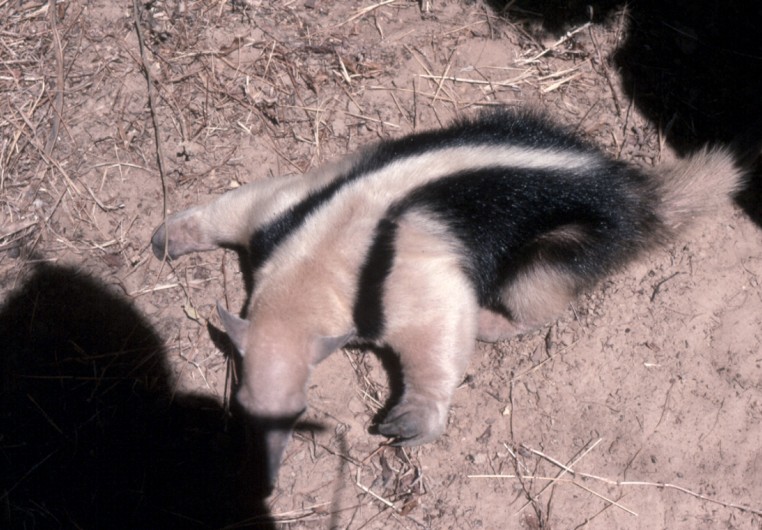Biodiversity
 Collared Anteater
Tamandua tetradactyla | Linnaeus, 1758
Collared Anteater
Tamandua tetradactyla | Linnaeus, 1758

Characteristics: Smaller than the Giant Anteater, with a body measuring approximately 60cm in length and with a 35-cm tail, which is flexible and covered with short fur. It has a dark, nearly black vest, in contrast to the yellowish color of the rest of its body, and it has four fingers on its hands and 5 on its feet.
Distribution: From Central America to Northern Argentina, and found throughout Brazil.
Habitat: Forests and open fields.
Habits: This species is predominantly nocturnal, but may be seen in activity during the day as well; when not in activity, it rests in tree hollows or in armadillo and paca burrows. It usually moves around or hides among trees, sniffing branches in search of eggs of birds that nest there.
Diet: Generally, myrmecophagous, feeding mainly on ants, termites, and on the larvae of these insects, but also on earthworms, bees, honey, and bird eggs.
Breeding: The gestation period varies from 130-150 days, with the birth of a single pup that the mother usually carries on her back.
In the UFRA area: This anteater species has its spatial distribution restricted to native forests, Wetlands, and Riparian with Exotic Forests. It is considered rare in the farms, having been seen on only three occasions.



